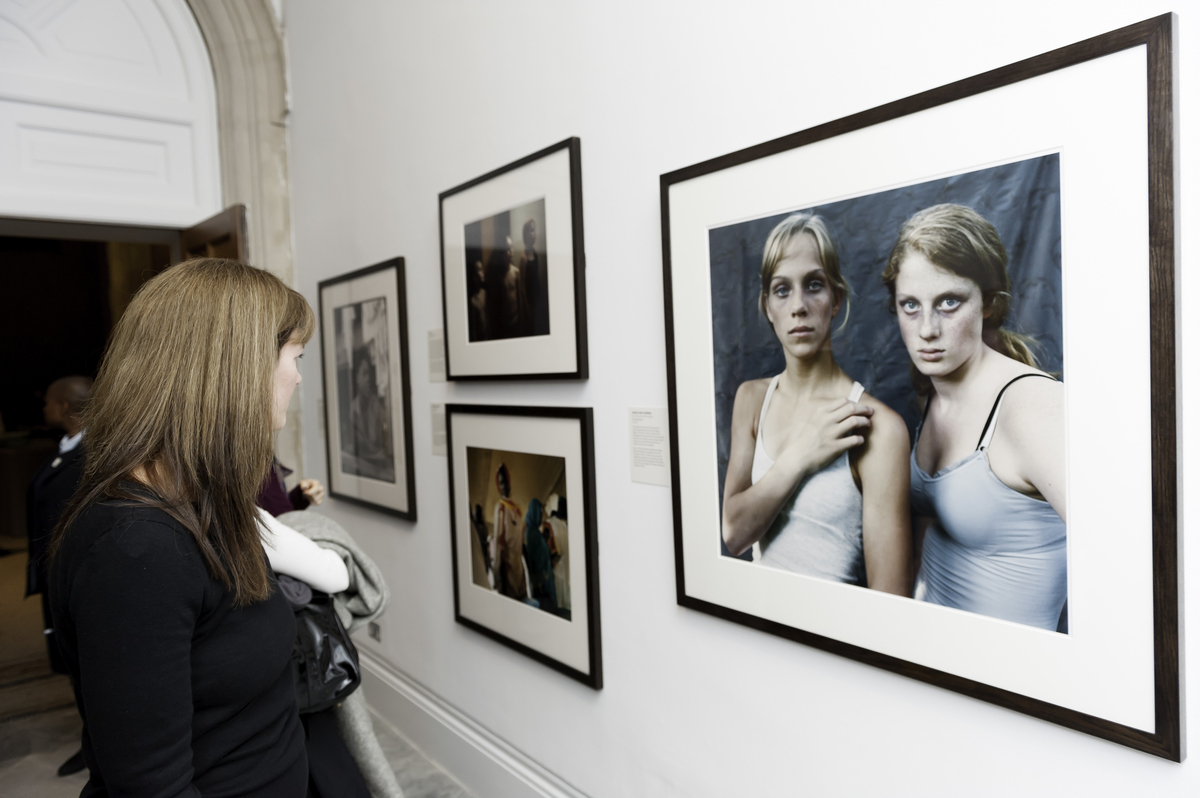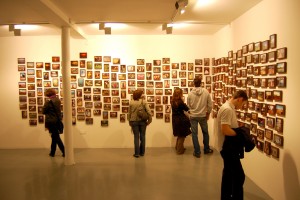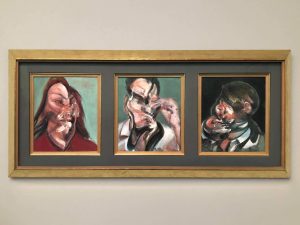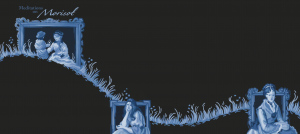
Representation or Tokenism? People of Colour in the UK Arts scene
by Aisha Oxley | June 22, 2015
Amidst the gloom of a typical rainy afternoon in London, a black woman dressed in gaudy yellow, her hair in a stylised afro, smiles into the distance. The woman isn’t actually a woman but a photo of one, printed on an advertisement for the Taylor Wessing Photographic Portrait Prize exhibition housed in the National Portrait Gallery. It is not often that I see images of black women in spaces such as the gallery. But while I had assumed the advertisement would mirror the overall racial makeup inside the exhibition, the woman was only one of a few, tucked into an inconspicuous corner. In fact, I almost passed her. I questioned the purpose of placing a black woman on an advertisement for a mainly white portrait show, challenging myself not to attribute it to tokenism.
Hayley Benoit, 26, the photographer behind the image, admitted that she felt discouraged after submitting to the contest.
“I had a conversation with someone following my submission to enter the competition, and the person made a joke about the competition. They mentioned that it would be stupid to submit a photo of someone smiling or a photo of a person that was not ginger. At this time I had already submitted my image and thought to myself – ‘what a waste of my time.’”
However, photos of racial minorities in styles divergent from the prize-winner norm continue to be submitted and displayed – though in modest numbers. Naturally, motives for entering vary widely but one is a recurring theme among those who submit portraits of racial minorities: the desire to make marginalized peoples visible in predominantly white exhibition spaces.
Marcia Michael, whose portrait of her mother, “Myrtle McKnight, My Mother”, was featured in the exhibition, succinctly expressed why she felt it was important for her work to be included.
“I’m glad that it was successfully chosen… because how many other black bodies did you see?”
Michael also underlined that it wasn’t simply about the inclusion of images of people of color, but how they were portrayed. “I’m emphasizing the human quality of the person in the photograph and then, you see the color,”
Photographer Sara al Obaidly also strives to portray a distinctive ‘human quality’ in her portraits of people of colour. Her “Together We Stand” depicts two Qatari girls, one in hijab facing the camera and the other with her back to the viewer, her exposed, braided hair tied with a Channel ribbon. Al Obaidly’s marrying of traditional elements of Arabic culture and western commercialization spurred debate at the exhibition. She explained the aim of her entry;
“I wanted to show something specifically from the Middle East in a positive light. Something not usually shown, not something that was in a war torn environment.”
Gorm Shackelford (who is white North American-British), entered with Mwasaru, a portrait from his series In the African East, shot in Kenya. He posited that stereotypical images of Africans impacts social consciousness, ultimately damaging viewers’ ability to empathize.
“I have a lot of respect for photographers who shine a light on people in need, but I also think that if we become accustomed to photographs of Africans as people who are having a hard time. If we start to think of Africans as the kind of people to whom bad things happen, then we stop being outraged if bad things do happen to them.”
Michael, al Obaidly, and Shackelford meant for their works to be subversive in the predominantly white context of the exhibition but they also speak to the phenomenon of minority underrepresentation in the arts sector, not just on the walls of galleries but on the lists of museum staff and elsewhere in arts administration.
As a black photographer and artist presenting work on the black body, Michael laments the lack of people of color in decision-making positions in the arts:
“In the UK, I can’t name you one person who owns a gallery who is of color. And even the [galleries] who tend to show works of black subjects, they’re still not owned by people of color. And therefore their teams do not always contain people of color. And this is how it’s been for a number of years, so personally I don’t see how it’s going to change.”
Recently, there have been some policy efforts to increase diversity in the arts. Based on analysis of the statistics above, the Arts Council of England announced that arts organizations would have to present a “creative case” for promoting diversity before receiving funding. However, this will still have a limited impact on the ability of black and ethnic minority artists to build up a presence of their work within established institutions in the UK. Michael reflects,
“The challenge is creating a legacy. Some of the main establishments, such as the Tate Modern, and the V&A, are slow on the uptake of black art and therefore the presence of these works in the public eye are mostly invisible. What is needed is to find a way in which black art is shown and maintained in the national collection.”
Not all artists from minority backgrounds within the UK share Michael’s frustrations. Benoit, who identifies as black British, does not think there is a difference in how members of ethnic minorities are received in the art world.
“The biggest challenge facing minority artists/photographers in the UK is exactly the same as any artist in the UK and that is the decision of what to present to the public as their art,” she said.
Al Obaidly agrees that it is the caliber of work that has most influence on how it is received
“If you come from a minority background, I don’t think it’s that much more challenging than if you’re a student who’s just come out of uni and you want to get your foot in the door. I think it’s the work that speaks for itself.”
Ethnic minorities in the UK lag well behind their white, European counterparts in accumulated wealth. In 2009, the UK’s Wealth and Assets Survey reported that the average white household had £221,000 in assets, while Black Caribbean households had £76,000, Bangladeshi households £21,000 and Black African households £15,000. Professions in the arts are not known for being lucrative, or even to provide consistent salaries, so it would follow that ethnic minorities, coming from communities that are still struggling to develop wealth, generally do not view the arts as a viable career or lifestyle.
While Michael, is committed to her craft, she relies on other work to remain financially secure.
“(When) entering competitions the cost, size and numbers of prints have to be considered. For the Taylor Wessing, I submitted two prints and the sizes were limited by costs factors.”
Perhaps Michaels’ comments are an apt metaphor for the caution with which some members of ethnic minorities may approach the world of the “arts.” Can they afford not to win -whether ideologically, in terms of recognition for their artistic perspective, or financially, by winning prize-money commissions for their work?
When I entered the Taylor Wessing exhibit after seeing Benoit’s portrait outside the gallery, I expected to see more people of color, photographed through many different lenses – literally and figuratively. Photographer Viviana Peretti, who identifies as white and lesbian, frequently photographs ethnic minorities, as in her series Dancing like a Woman at the National Bambuco Gay Pageant in Colombia. She is a firm believer in the importance of representing diversity.
“French anthropologist Claude Levi-Strauss used to say that knowing other cultures helps us to understand and question our own culture. And knowing how people deal with gender issues and sexual identity/orientation in different cultures helps me to understand myself, my culture and my journey through life.”
The photographers I spoke to reflect the diversity of opinion on the presence of racism in the arts. Nevertheless, they agree that works which portray black and brown people (such as theirs) are in the minority, and emphasize the need for these images. But if they remain tokens, fleeting glimpses of color in an otherwise white canvas, how likely is it that the “understanding” that Peretti feels while creating her images will reach others? How much potential lies within artistic institutions to foster the exchange of knowledge, ideas, empathy – and how much of it is being wasted?




